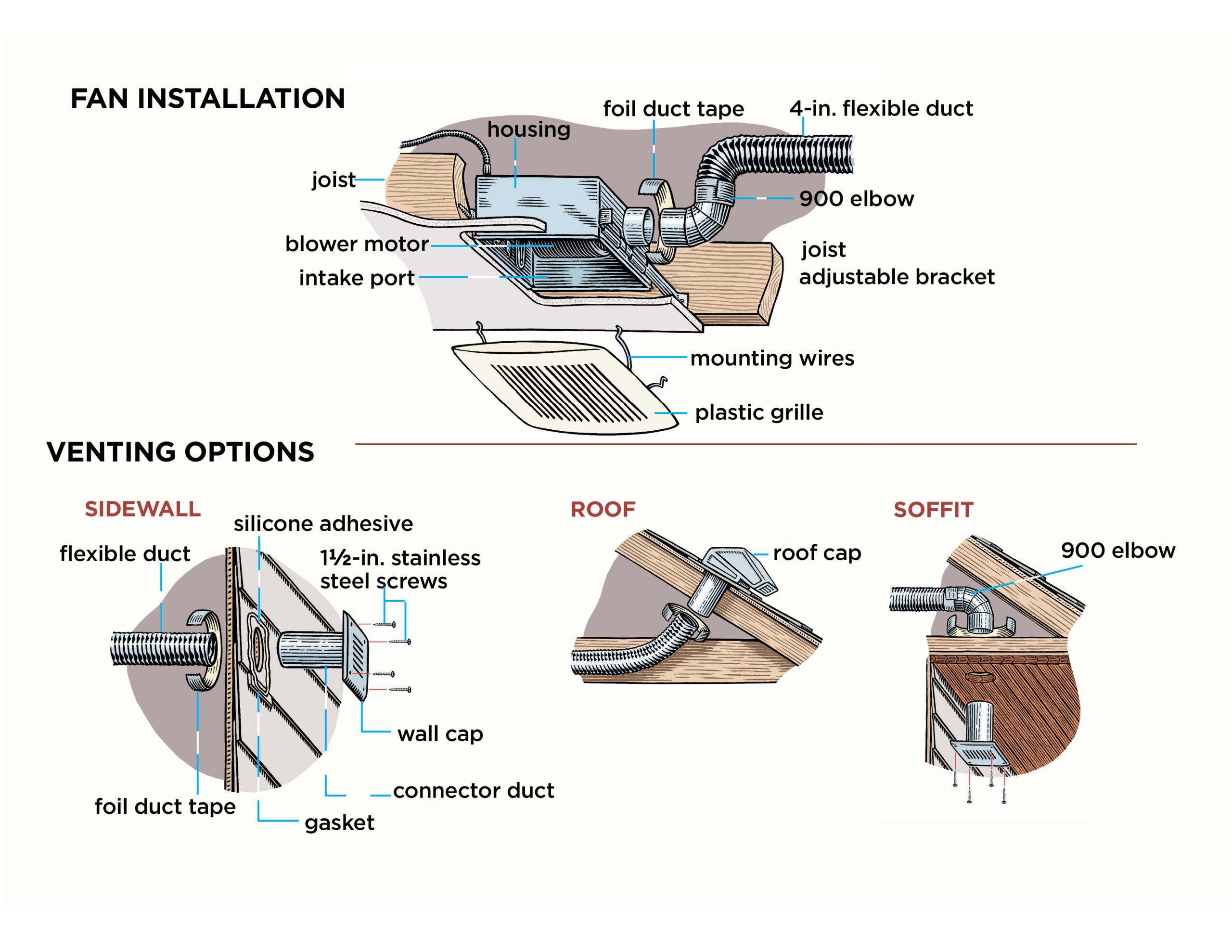Electrical Troubleshooting

Bathroom extractor fan not working properly – Hey there, bathroom extractor fan enthusiasts! If your fan is playing hooky, it’s time to roll up our sleeves and get electrical. Let’s dive into the electrical components and how to troubleshoot them like a pro.
Yo, so my bathroom extractor fan is on the fritz, leaving my bathroom smelling like a wet dog. But hey, on the bright side, I’ve been thinking about giving my bathroom a boho decor makeover. I mean, who doesn’t love a bathroom with some cozy vibes?
But back to the fan, it’s driving me nuts. I’m starting to think I might need to call in a professional.
Components of an Extractor Fan
- Motor: The heart of the fan, it spins the blades to extract air.
- Capacitor: A small electrical device that helps the motor start up.
- Switch: Turns the fan on and off.
- Wiring: Connects the components and provides power to the fan.
Step-by-Step Troubleshooting
- Check the power supply: Make sure the fan is plugged in and the power is turned on.
- Inspect the wiring: Look for loose or damaged wires, especially around the switch and motor.
- Test the switch: Turn the switch on and off several times to see if the fan responds.
- Check the capacitor: Use a multimeter to test the capacitor for continuity and capacitance.
- Examine the motor: Listen for any unusual noises or vibrations coming from the motor.
Common Electrical Faults
- Blown fuse or tripped circuit breaker: Reset the breaker or replace the fuse.
- Loose wiring: Tighten any loose connections.
- Faulty switch: Replace the switch.
- Damaged capacitor: Replace the capacitor.
- Burnt-out motor: Contact a qualified electrician for motor replacement.
Mechanical Inspection

Let’s get our hands dirty and take a closer look at the mechanical components of your bathroom extractor fan. It’s like being a bathroom detective, but instead of solving crimes, we’re fixing fans.
Fan Blades, Bathroom extractor fan not working properly
The fan blades are the heart of your extractor fan. They’re the ones that spin and create the airflow that sucks out all that steam and moisture. To inspect them, you’ll need to remove the fan grille. Once you’ve done that, you can check the blades for any damage, like cracks or chips. If you find any, it’s time to replace the blades.
Motor
The motor is the power behind the fan blades. It’s what makes them spin. To inspect the motor, you’ll need to remove the fan housing. Once you’ve done that, you can check the motor for any signs of damage, like burn marks or loose wires. If you find any, it’s time to replace the motor.
Housing
The housing is the part of the fan that holds everything together. It’s usually made of plastic or metal. To inspect the housing, you’ll need to remove the fan from the wall or ceiling. Once you’ve done that, you can check the housing for any cracks or damage. If you find any, it’s time to replace the housing.
Cleaning and Lubrication
Once you’ve inspected the fan components, it’s time to clean and lubricate them. To clean the fan blades, you can use a damp cloth. To clean the motor, you can use a vacuum cleaner. To lubricate the fan, you can use a few drops of oil. Once you’ve cleaned and lubricated the fan, it’s time to put it back together and test it out. If it’s working properly, you’re all set!
Ventilation Assessment: Bathroom Extractor Fan Not Working Properly

Proper ventilation in a bathroom is crucial to prevent moisture buildup, mold growth, and unpleasant odors. The extractor fan plays a key role in maintaining airflow and removing excess humidity.
To assess the airflow and efficiency of the extractor fan, several methods can be employed:
Airflow Measurement
Using an anemometer, measure the airflow at the fan’s outlet. Compare the measured airflow to the fan’s specified airflow rating. If the actual airflow is significantly lower, it may indicate blockages or other issues.
Visual Inspection
Check for any visible obstructions in the fan’s grille or ductwork. Ensure that the fan blades are rotating freely and not obstructed by dust or debris.
Ductwork Design and Length
The design and length of the ductwork can impact the fan’s performance. Avoid sharp bends or kinks in the ductwork, as these can create resistance to airflow. Additionally, excessive ductwork length can reduce the fan’s efficiency.
So, my bathroom extractor fan has been acting up lately, not pulling out the steam properly. I’m starting to think it might be possessed by the ghost of Tom Nook, trying to keep me from decorating my house with animal crossing wallpaper.
But seriously, I need to get this fan fixed before my bathroom turns into a sauna.